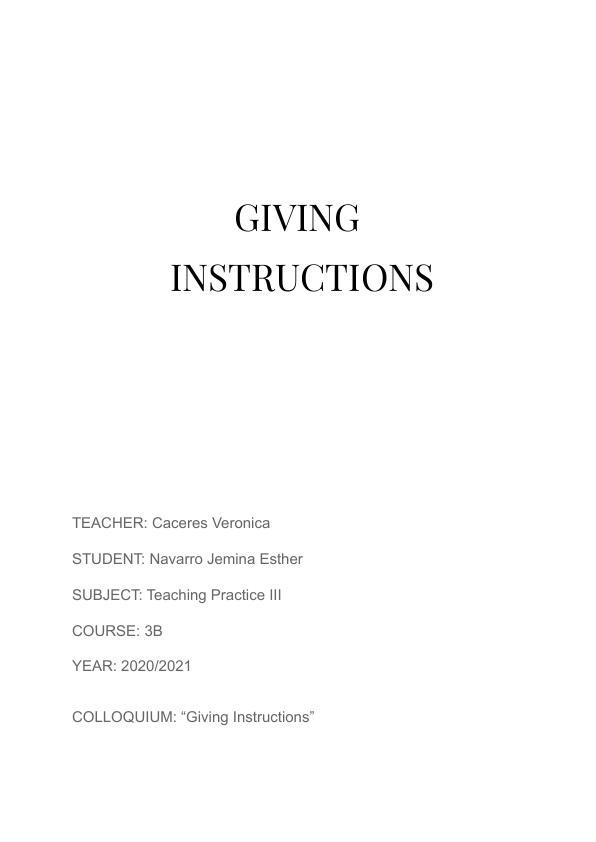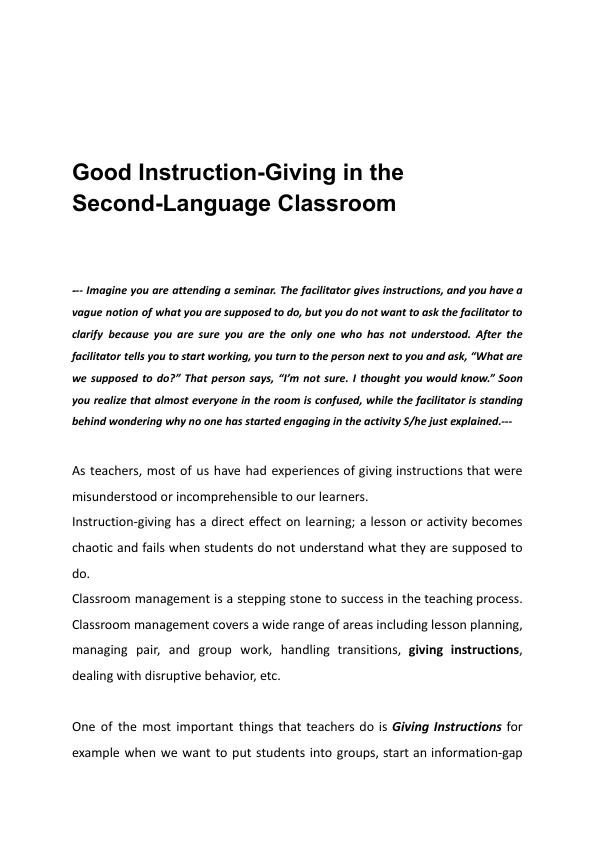Giving Instructions in the Second-Language Classroom
14 Pages3371 Words49 Views
Added on 2023-01-31
About This Document
This article discusses the importance of giving clear instructions in the second-language classroom and provides techniques for effective instruction-giving. It emphasizes the impact of instruction-giving on learning and highlights the role of classroom management in the teaching process. The article also offers tips on preparation and delivery stages of instruction-giving, including the use of support mechanisms, getting students' attention, speaking clearly, and using short, simple, and clear instructions. It emphasizes the need for modeling, breaking down instructions, giving time limits, and checking for understanding. Overall, it provides valuable insights for teachers to enhance their instruction-giving skills.
Giving Instructions in the Second-Language Classroom
Added on 2023-01-31
ShareRelated Documents
End of preview
Want to access all the pages? Upload your documents or become a member.
Reflective Writing on TESOL
|38
|9215
|229
How to Be an Effective Teacher
|12
|558
|78
Best Practices in Teaching English Language Learners and General Classes
|2
|582
|377
How to Be an Effective Teacher
|12
|626
|92
The GCU College of Education
|8
|1301
|38
Unit H/505/0912: Teaching, Learning and Assessment in Education and Training
|6
|703
|328




